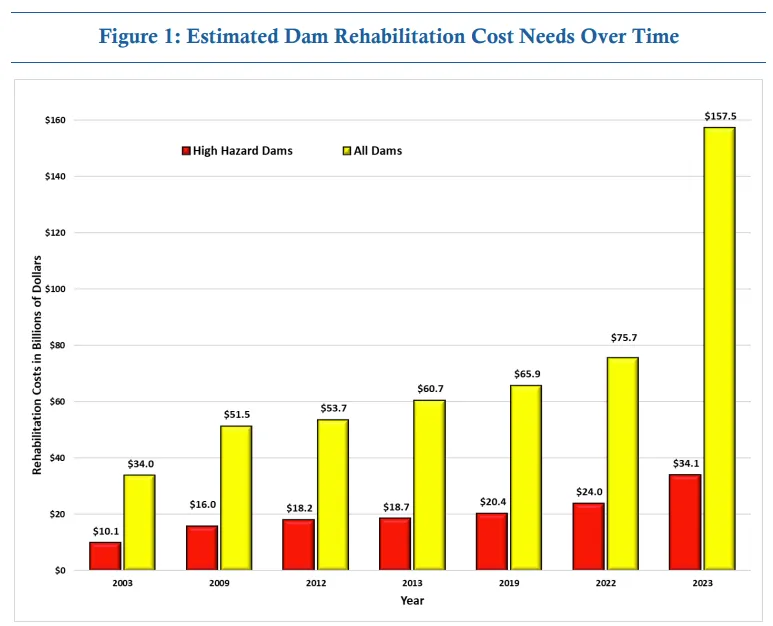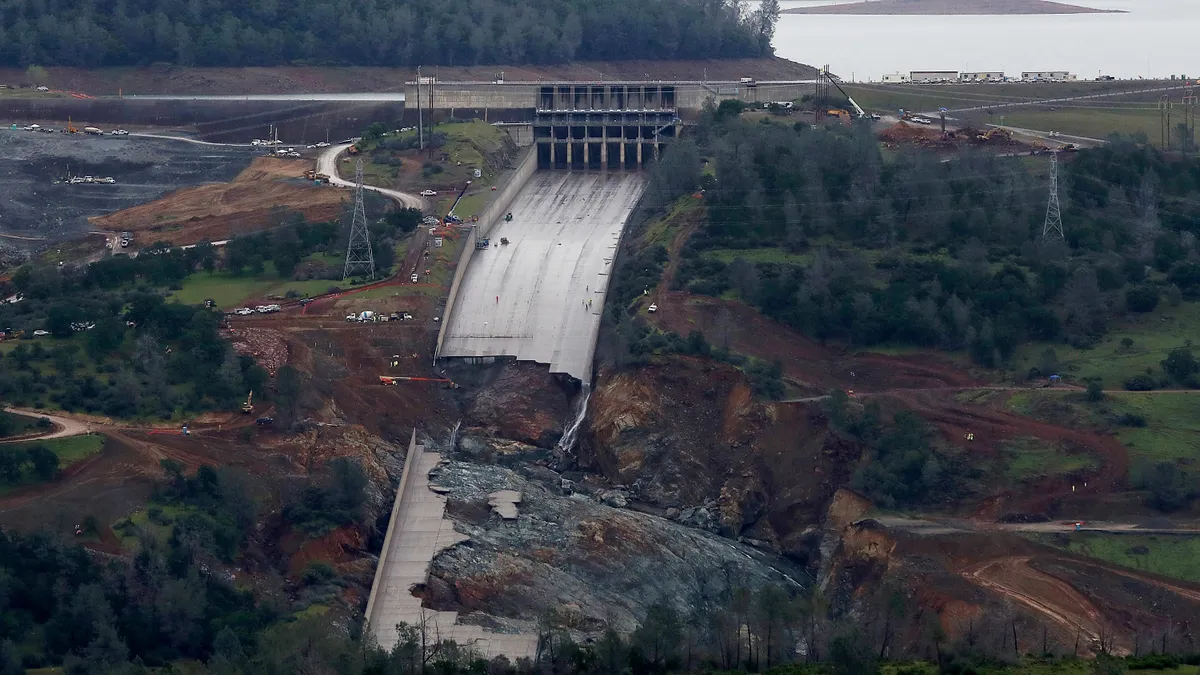Dive Brief:
- It would cost $157.5 billion to rehabilitate the nation’s 88,616 deficient non-federal dams, per a report released by the Association of State Dam Safety Officials this month — a sum that dwarfs the amount of federal assistance available to do so. The price tag to remediate just the most critical dams is estimated at $34.1 billion.
- Rehabilitation becomes necessary as dams age, technical standards and techniques evolve and downstream populations and land use change. However, many dam owners, especially private dam owners, find it difficult to finance costly rehabilitation projects. Deferring that upkeep can lead to disastrous failures.
- The federal Infrastructure Investment and Jobs Act includes funding for dam rehabilitation. However, the study indicates that the IIJA’s $4 billion investment over five years is not nearly enough to address even the most dangerous of dams.
Dive Insight:
The number of crumbling dams has jumped in the past decade as deficiencies outpace rehabilitation, according to the study. This poses a huge safety risk to area residents and businesses. The number of high-hazard potential dams, where loss of life is probable should they fail, rose almost 20% in the past 10 years to more than 16,000.
For instance, in 2019 the Spencer Dam near Spencer, Nebraska, failed after an unusually intense storm created a flood of ice, causing the structure to collapse. Kenny Angel, who lived just beneath the dam, died when the deluge washed away his home and business.
Nebraska regulators had categorized Spencer Dam as a “significant hazard,” which meant no loss of life was expected if it failed. An ASDSO investigation found it should have been rated “high hazard,” which would have prompted a formal emergency action plan.
Not only are costs of dam rehabilitation high, they are rising significantly. That’s due to a combination of factors, including higher costs for construction materials and labor and the increased breadth of engineering studies and analyses, according to the study. ASDSO also found funding and permitting constraints contribute significantly to the slower rate of completion. As maintenance, repair and rehabilitation work is deferred, costs will only rise further.

That means the federal government needs to step up to provide more funding, ASDSO’s task force member Sharon Tapia said in the release.
“To ensure the safety of our nation’s dams, we must maintain high funding levels to address the thousands of dams needing rehabilitation,” said Tapia. “We cannot return to previous funding levels, typically less than 1% annually of the investment made in the Bipartisan Infrastructure Act.”
ASDSO’s cost estimates are based on real nationwide dam rehabilitation prices for non-federal dam repairs over the past decade, as well as estimated prices for upcoming projects, including dam removals. Costs run from $10,000 to more than $500 million for large complex projects.
The five states with the highest number of deficient dams, according to the study, are:
- Texas, 7,255.
- Kansas, 6,417.
- Mississippi, 6,059.
- Georgia, 5,498.
- Missouri, 5,335.














